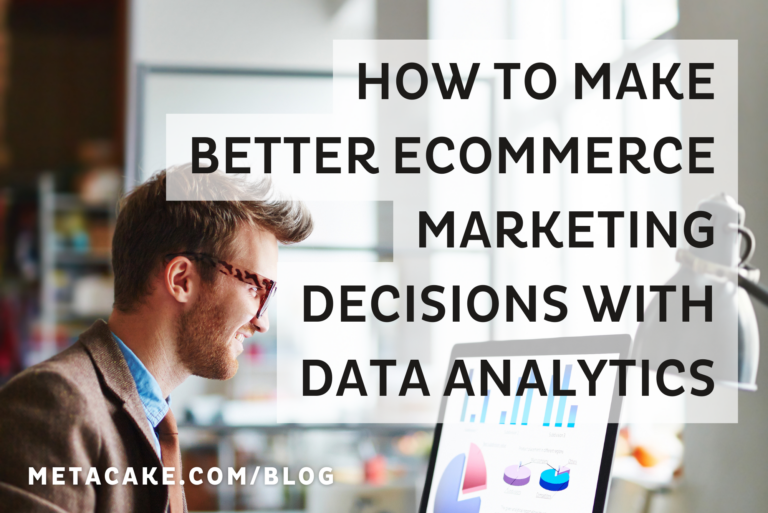Any business owner trying to attract new buyers can sympathize with John Wanamaker’s famous quote: “Half the money I spend on advertising is wasted. The trouble is, I don’t know which half.”
But it doesn’t have to be that way anymore. Now, countless analytics tools can show ecommerce business owners which marketing strategies are working, which aren’t, and which are likely to.
Here’s what using data analytics in ecommerce can do for you.
What Is Data-Driven Marketing?
Data-driven marketing uses data analytics to help ecommerce businesses get to know their customers based on their actions. It can reveal:
- Who they are
- What they like (and why)
- What they buy (and why)
- When they buy
- Where they buy
- How they buy
- Why they buy
Using data analytics in ecommerce helps you make informed decisions about how to spend your time and money. The better you understand your customers’ buying patterns, the higher your marketing dollars’ ROI will be.

Are Data Analytics Useful in Ecommerce?
You might not want to admit it, but you’ve probably spent money on marketing based on nothing more than a hunch it’ll pay off.
Or, you’ve made a marketing decision based on vanity metrics that didn’t result in more revenue. Getting more website hits or likes on Facebook might feel good, but it doesn’t necessarily mean your business will see more profit.
Instead, data-driven marketing shows how many people you engage and how many make a purchase (and will make another), helping you make informed decisions about where to spend your marketing budget.
Before the internet, marketing was broadcast-based. Business owners asked, “How can I shout about my product in as many venues as possible?”
But marketing has evolved. Mass media marketing is no longer the only option — and it doesn’t work for many ecommerce brands, anyway.
Marketing is now a two-way street in which customers talk to you on social media (and expect you to reply within a few hours). You can use those social media metrics and more to learn how people interact with your brand.
How to Interpret Data Analytics in Ecommerce
Of course, collecting the data is easy. For it to be useful, you have to interpret it and let it inform your existing marketing strategy.
Take an ecommerce business that sells shoes, for example. The business owner might notice brown shoes were last month’s top seller and decide to put brown shoes on sale to attract new customers.
However, the more savvy business owner, applying ecommerce data analytics, might instead:
- Look at all orders containing brown shoes.
- Notice that 60% of people bought a certain shoe polish at the same time.
- Send a coupon for shoe polish to the remaining 40% who bought brown shoes, turning them into repeat buyers.
Another example: An ecommerce business owner runs a promotion for 25% off orders of $100 or more, and revenue spikes. The business owner decides to run this promotion on an ongoing basis, but after another month, sales drop well below their previous monthly average.
What happened?
The business owner made a decision based on a revenue spike alone. Had he reviewed his data analytics, he would have realized 90% of orders placed during the promotion were from repeat customers who likely would have come back to buy at a later date anyway. That little mistake cannibalized his future revenue.
A more savvy ecommerce business owner would have reviewed the distribution of new versus returning customers and, instead of repeating the offer, spent marketing dollars to attract new customers.
Bottom line? Don’t make a decision based on a single metric. Use ecommerce data analytics to refine your marketing strategy.
How to Implement Data Analytics in Ecommerce Marketing
To take advantage of data analytics in ecommerce, follow these steps:
First, you need a way to track your data. We recommend Google Analytics — it’s a great way to get started with data analytics in ecommerce.
After that, you need:
- A general understanding of marketing, pricing psychology, and customer behavior
- A deep understanding of your ecommerce audience and their data
Unfortunately, knowing your audience well doesn’t necessarily mean you’ll know where to spend your marketing dollars. No one formula guarantees success. To set an execution strategy, you need experience, skill, and passion for serving your audience.
Then, implement your strategy and adapt along the way based on your ongoing analytics.
Ecommerce data analytics aren’t always easy to interpret and act on. If you’d like the help of an expert, growth-oriented team, contact us. We’d love to talk.
